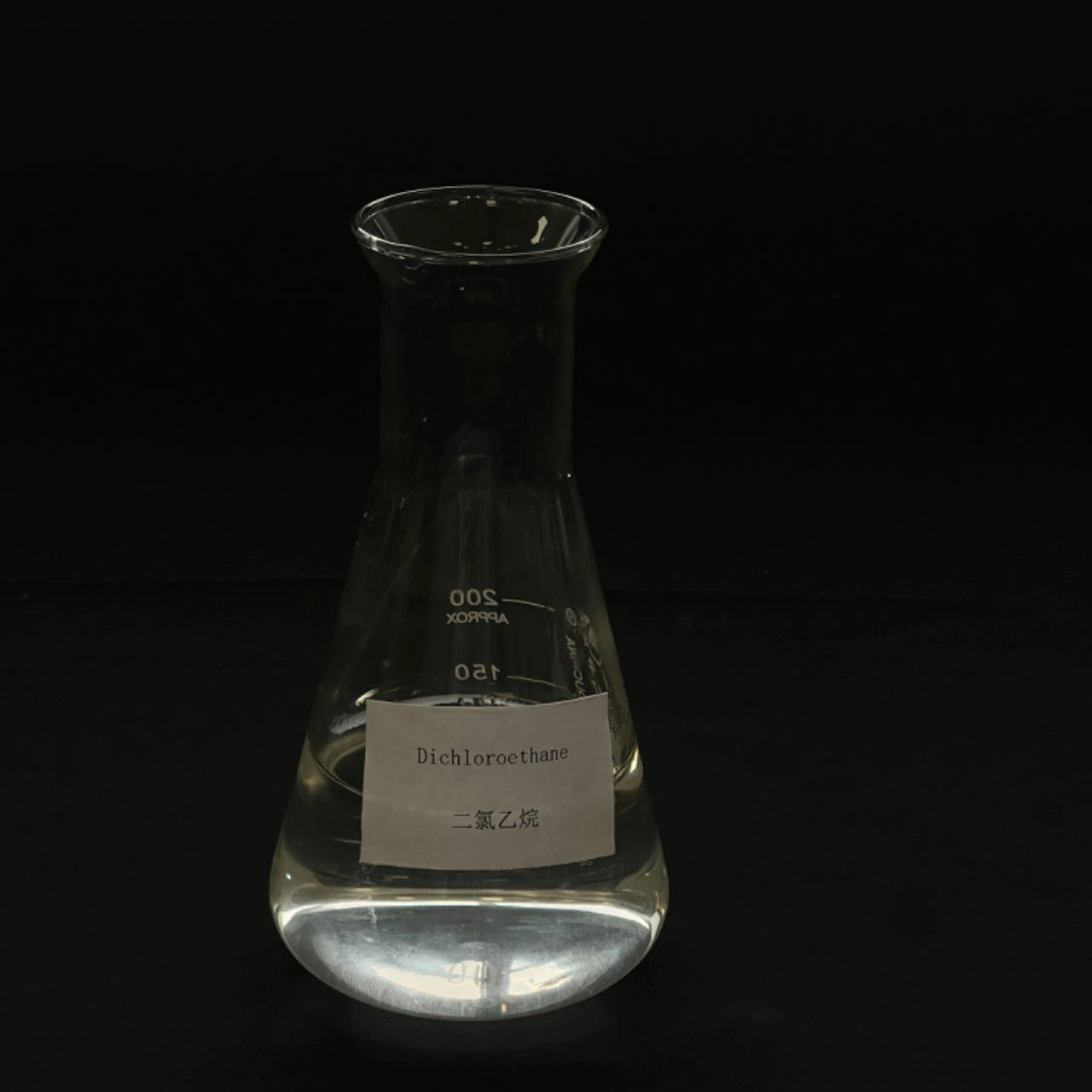Dichloroethane, also known as ethylene dichloride (EDC), is utilized as a solvent in various chemical processes and industries due to its favorable properties.
Here’s how dichloroethane is used as a solvent:
- Extraction and Purification: Dichloroethane is often used as a solvent for extracting and purifying various compounds, including fats, oils, and natural products. It helps dissolve specific components, separating them from the mixture.
- Chemical Reactions: It can be used as a reaction medium in chemical processes, especially in those involving organic compounds. The solvency of dichloroethane can enhance the reactivity of reactants and improve the yield of reactions.
- Polymer Production: In the production of polymers like polyvinyl chloride (PVC), dichloroethane is used as a solvent in the polymerization process. It assists in dissolving PVC precursors and supports the growth of polymer chains.
- Resin and Adhesive Formulation: Dichloroethane is used in the formulation of resins and adhesives. It helps create the desired consistency and viscosity of these materials, making them suitable for various applications, such as laminates and coatings.
- Degreasing and Cleaning: In industrial cleaning applications, dichloroethane is employed as a degreasing agent. It effectively removes grease, oils, and contaminants from machine parts and surfaces.
- Paint and Coating Industry: It can be found in some paint and coating formulations as a solvent. Dichloroethane helps disperse pigments and resins and contributes to the consistency and drying properties of paints and coatings.
- Agriculture: Dichloroethane has been used in the formulation of certain pesticides and herbicides. It serves as a carrier and aids in the dissolution of active ingredients.
- Fuel Additives: Historically, it was used as a lead scavenger in leaded gasoline. It helped prevent the buildup of lead deposits in engines by forming lead chloride, which could be removed with other engine emissions.
- Chemical Analysis: In analytical chemistry, dichloroethane is employed in various analytical techniques, such as gas chromatography (GC), as a solvent and diluent for sample preparation and analysis.
- Manufacturing of Refrigerants and Propellants: Dichloroethane is used in the production of refrigerants and aerosol propellants. It plays a role in the formulation of compounds that function as cooling agents or help propel products from aerosol containers.
Dichloroethane’s properties, including its ability to dissolve a wide range of compounds, low boiling point, and stability, make it suitable for diverse industrial applications. However, it’s essential to consider safety precautions and regulatory guidelines when using dichloroethane, especially in applications involving exposure to workers or the environment.
What are the potential environmental and health concerns associated with the industrial use of dichloroethane?
The industrial use of dichloroethane (ethylene dichloride, EDC) is associated with several environmental and health concerns due to its toxic and potentially harmful properties.
Here are some of the key concerns:
Environmental Concerns:
- Air Pollution: The volatilization of dichloroethane during industrial processes can lead to its release into the atmosphere. This can contribute to air pollution, and dichloroethane may undergo photochemical reactions, potentially forming harmful byproducts.
- Groundwater Contamination: Spills or leaks of dichloroethane can contaminate soil and groundwater, posing risks to aquatic ecosystems and potentially affecting drinking water sources.
- Bioaccumulation: Dichloroethane can bioaccumulate in aquatic organisms and terrestrial wildlife, potentially entering the food chain and leading to long-term environmental impacts.
- Aquatic Toxicity: The presence of dichloroethane in water bodies can be toxic to aquatic organisms, affecting the health of fish and other aquatic species.
- Persistence: Dichloroethane is relatively persistent in the environment, and its presence can last for extended periods, posing a long-term threat to ecosystems.
Health Concerns:
- Toxicity: Dichloroethane is toxic and can pose health risks to humans and animals upon exposure. Inhalation, ingestion, or skin contact with the compound can lead to health issues.
- Carcinogenicity: Long-term exposure to dichloroethane has been associated with an increased risk of cancer, particularly liver cancer. China Dichloroethane manufacturers It is classified as a Group 1 carcinogen by the International Agency for Research on Cancer (IARC).
- Neurological Effects: High levels of exposure to dichloroethane may lead to neurological symptoms, including dizziness, headache, and incoordination.
- Respiratory Effects: Inhalation of dichloroethane vapors can irritate the respiratory system, leading to symptoms like coughing and throat irritation.
- Liver and Kidney Damage: Prolonged exposure to dichloroethane can result in damage to the liver and kidneys, impacting their normal function.
- Developmental and Reproductive Effects: Dichloroethane exposure during pregnancy may have adverse effects on fetal development. It can also affect male and female reproductive systems.
- Cardiovascular Effects: High-level exposure can lead to cardiovascular effects, including arrhythmias and changes in blood pressure.
- Acute Toxicity: In cases of acute exposure, symptoms may include nausea, vomiting, and headaches. Severe exposure can lead to coma and death.
- Flammability: Dichloroethane is flammable and poses fire and explosion hazards in industrial settings.
Regulatory Measures:
To address these concerns, regulatory agencies in many countries have established limits on occupational exposure to dichloroethane, implemented controls on its industrial use, and set environmental regulations to limit its release into the environment. Safe handling procedures, proper storage, and disposal practices are essential to mitigate these risks.
It is crucial for industries that use dichloroethane to adhere to regulatory guidelines, provide appropriate training to workers, and employ safety measures to protect both human health and the environment. Substituting less hazardous substances where possible and improving industrial processes can help reduce the environmental and health impacts associated with dichloroethane use.
